Corporates rode quantitative easing wave with a surge of bond investments
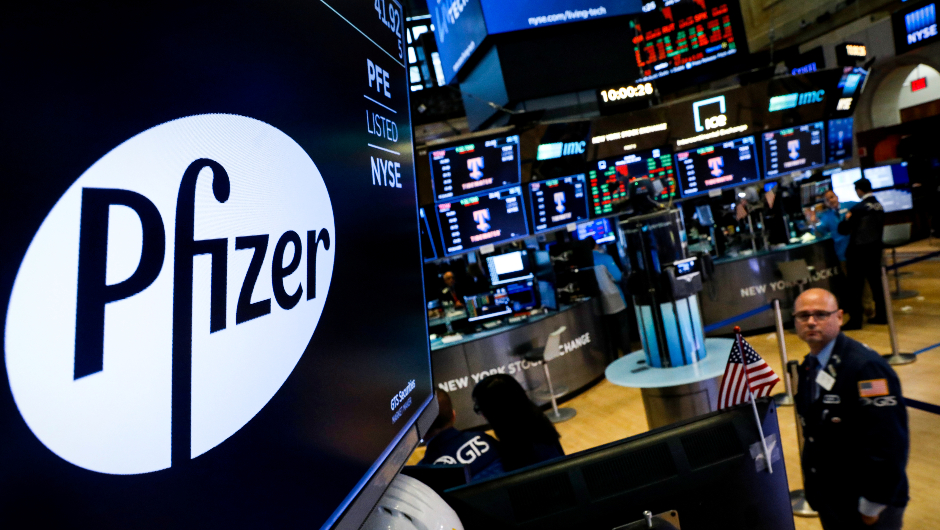
The biggest S&P 500 companies added $40.8 billion in government bonds and $14.3 billion in corporate bonds in Q2 2020.
Primed with new cash in the wake of the pandemic, the biggest US companies ramped up their bond investments in the second quarter, benefiting from a market rally after central banks intervened to restore market confidence with a wave of bond buying.
The top 30 companies in the S&P 500 index as ranked by their amount of investments at the end of 2019 saw a rise of securities holdings – which comprises of debt and equity securities – by $65.6 billion in Q2 2020 from the end of Q1 while in same period cash and cash equivalent rose by just $23.7 billion.
In the previous quarter, when the Covid-19 pandemic started, these top companies had raised liquidity levels on their balance sheet by increasing cash and by halting their share repurchase programmes. In Q1, the companies had raised $89.5 billion in cash and cash equivalents while dropping $27 billion of securities holdings off their balance sheet.
Overall, cash investments in 2020 have risen by $113 billion while securities holdings saw an increase of $38 billion among these top 30 companies. The total cash and securities holdings at the end of Q2 2020 were $495 billion and $697 billion respectively which in terms of percentage are up by 29.7% and 5.8% from 2019 end.
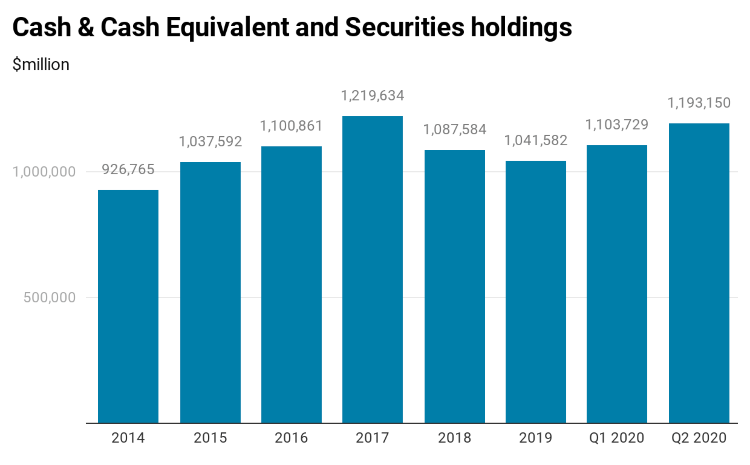
The largest change in securities holdings in absolute terms was seen in Amazon which went up by $11.8 billion in Q2 from the end of Q1. Similarly, Apple, Ford and Johnson & Johnson saw a jump of $7.5 billion, $5.7 billion and $5.4 billion respectively in the same period.
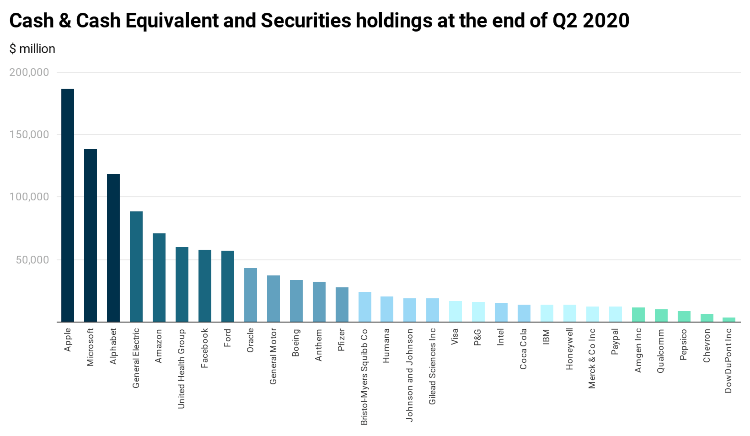
The rise in securities in case of Amazon can be attributed government and corporate bond holdings. Government bond holdings went up from $6.9 billion in Q1 to $12 billion in Q2 while for corporate bonds it was $12 billion to $18 billion in the same period. Since Amazon does not separately report the cash equivalent and securities part of its bond holdings we have assumed government bond and corporate bond holdings based on the proportion of their total investment holdings. Similarly, this was done for Gilead Sciences, Oracle and Amgen.
Boeing’s cash and cash equivalents saw the biggest change in absolute terms in Q2 from Q1 end where it went up from $15.2 billion to $32 billion, representing a change of $16.7 billion. Of this jump, the majority came from an increase in time deposits which went up from $173 million to $11.9 billion. The planemaker raised $25 billion from a bond issue in the same period.
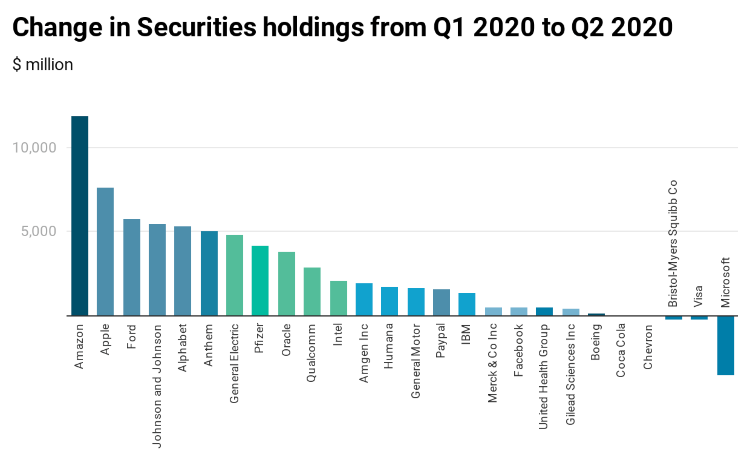
The government bonds holdings for these companies rose by $40.8 billion in Q2 2020 from Q1 end while for corporate bonds it went up by $14.3 billion. In the previous quarter, the government bonds had dropped by $16.1 billion while corporate bonds rose slightly by $144 million. Overall, the YTD increase for government bonds and corporate bonds are $24.6 billion and $14.4 billion respectively. The total government bond holdings and corporate bond holdings at the end of Q2 2020 stood at $322.5 billion and $239.1 billion respectively.
The Federal Reserve and European Central Bank (ECB) both announced the corporate bond-buying program in March. Fed announced its Secondary Market Corporate Credit Facility (SMCCF) which will provide liquidity for outstanding corporate bonds. The Primary Market Corporate Credit Facility (PMCCF) and Secondary Market Corporate Credit Facility (SMCCF) had an initial allocation of equity worth $50 billion and $25 billion while the combined size would be up to $750 billion. ECB launched its Pandemic emergency purchase programme (PEPP) with a value of €1,350 billion.
The value of corporate bonds bought under these new programs by the Fed were $45.04 billion at the end of 30th September while for ECB it was €17.62 billion at the end of July 2020.
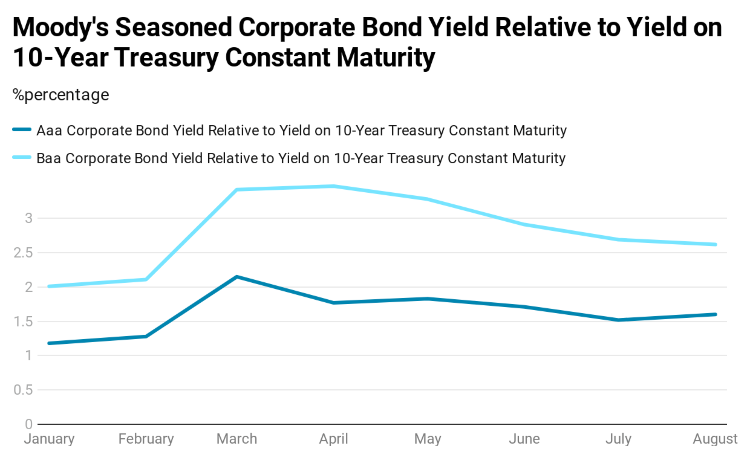
Corporate bond spreads peaked in March but since then they have come down but not to the pre-pandemic levels.
Companies such as IBM, Chevron, Honeywell, DowDuPont, Coca-Cola and PepsiCo does not provide information on bonds holdings so the data for these were not included in the government and corporate bond holdings calculation.
The composition of securities holdings for these companies also saw a shift. Securities as part of total holdings now hold 58.5% in Q2 2020 which is up from 57.3% in Q1 2020. Given that, on CCE front, it dipped to 41.5% in Q2 2020 which is lower than the high of 42.7% in Q1 2020.
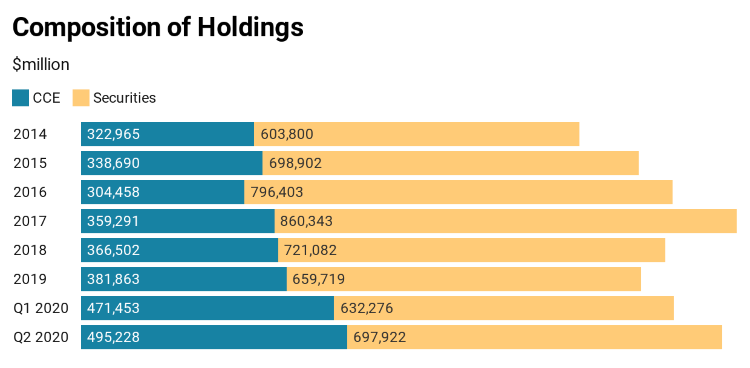
In wake of secured and rising liquidity and with undrawn credit lines, some companies have resumed share buyback programs and also resumed dividends which they had stopped in Q1 2020.
Companies such as Apple, Alphabet, Pfizer, Amgen and Anthem have resumed or have continued with their share repurchase program and dividend distribution.
“With liquidity concerns not as prevalent as they were earlier in the year, we have resumed our share repurchase program and continue to expect to repurchase greater than $1.5 billion of shares for the year”, said John Gallina, Executive Vice President and Chief Financial Officer at Anthem.
While Mastercard did not indulge in any share repurchase in Q2, but in July of Q3, the company resumed it.
The mean cash holdings in Q2 were $16.5 billion up from $15.7 billion in Q1 while for securities it was $24.9 billion rising from $22.5 billion in Q1.